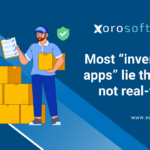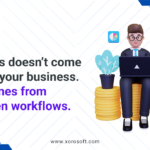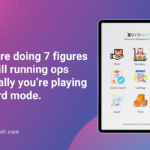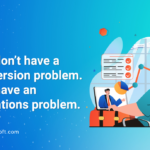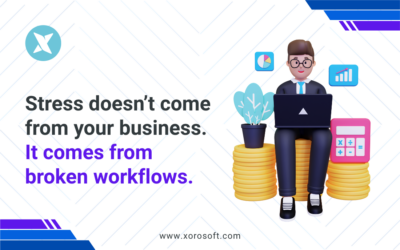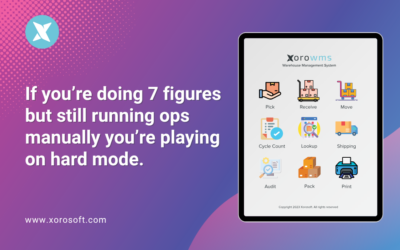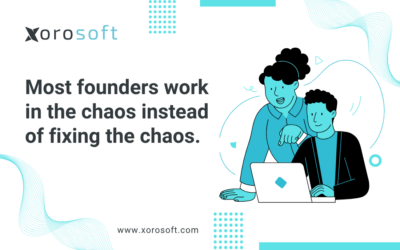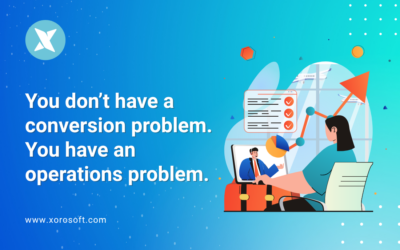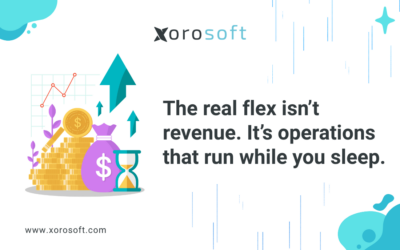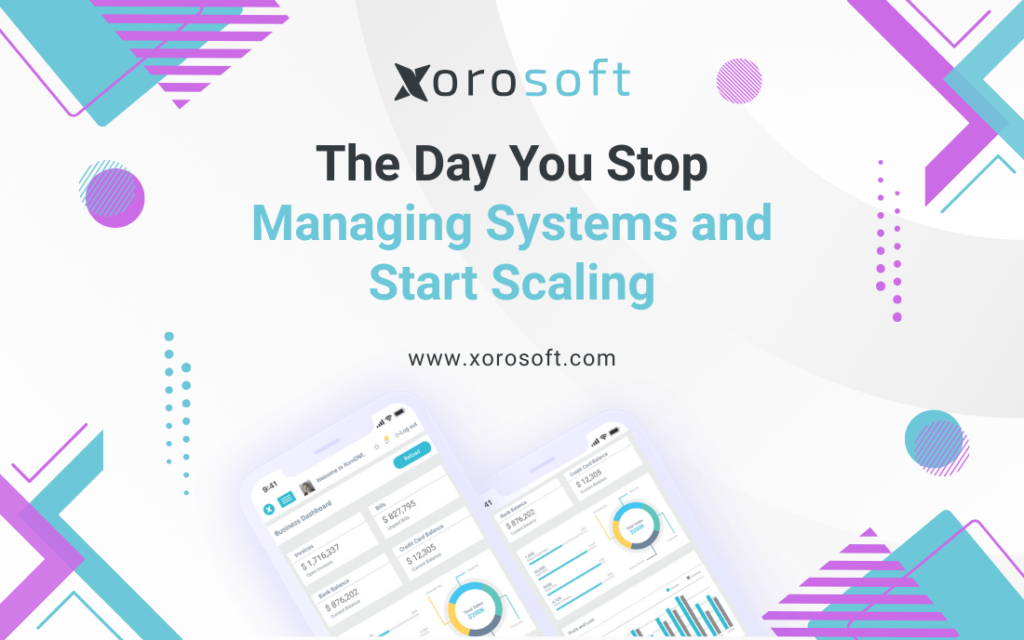
When Growth Starts Feeling Like Chaos
There’s a turning point in every ecommerce founder’s journey — especially for those trying to scale without ERP automation for ecommerce brands. The day growth stops feeling exciting and starts feeling like juggling chaos. Orders come in faster than your systems can keep up. Inventory data doesn’t match. Reports lag behind. Every “integration” needs another sync.
However, with the right ERP automation for ecommerce brands, this chaos can finally end. You didn’t build your brand to spend hours managing apps. You built it to grow, to create, and to lead.
So, what if you could stop managing systems — and start scaling with clarity instead?
How Systems Without ERP Automation Hurt Ecommerce Brands
When you first start out, every app feels like a quick win. Shopify for sales. ShipStation for shipping. QuickBooks for accounting. Maybe a spreadsheet to bridge the gaps.
But as your order volume grows, these tools start colliding. None of them communicate in real time, and as a result, your team fills the gaps manually. Each integration demands attention, while new errors appear faster than you can fix them.
Consequently, what once looked like efficiency turns into friction. You’re scaling sales, yet your backend feels slower every month.
This isn’t an operations problem — it’s a systems problem.
Why Fragmented Operations Limit Brand Growth
The reason scaling feels harder each quarter isn’t your team’s effort — it’s the structure underneath. When every system runs independently, your business operates on several disconnected truths.
Operations depend on outdated spreadsheets, finance works off delayed reports, and fulfillment constantly guesses what’s really in stock.
As a result, small errors multiply and margins shrink.
Therefore, the fix isn’t better coordination — it’s a unified ERP automation system for ecommerce brands that gives every team the same live data. When your operations sync automatically, you stop reacting and start optimizing.
Real-Time Operations with ERP Automation for Ecommerce Brands
Most founders hear “automation” and think about replacing people. In reality, it’s about freeing people to focus on growth instead of maintenance.
With ERP automation, every order, SKU, and invoice syncs automatically. Shopify sales appear instantly in accounting. Inventory levels update in real time across Amazon, warehouse, and retail.
Moreover, teams no longer chase yesterday’s reports — they act on live visibility. Instead of fixing issues after the fact, you prevent them before they happen.
Eventually, this real-time clarity becomes the heartbeat of your business.
Seven Steps to ERP Automation for Ecommerce Brands
If you’re ready to stop managing systems, here’s how to start transforming your backend into a seamless, automated ecosystem.
1. Centralize your core operations.
Unify sales, inventory, purchasing, and accounting under one ERP platform. As a result, you’ll eliminate reconciliation delays and cut redundant work dramatically.
2. Automate inventory synchronization.
Enable real-time syncing across Shopify, Amazon, and warehouses. This simple shift can cut stockouts by half and prevent overselling before it starts.
3. Streamline fulfillment workflows.
Integrate your warehouse and shipping systems for automatic pick-pack-ship processes. Consequently, your pick accuracy increases while fulfillment times shrink.
4. Connect finance and operations directly.
Ensure every sale automatically updates accounting and cash flow. Therefore, your cash conversion cycle improves, and month-end closes without panic.
5. Improve visibility across departments.
Use dashboards to see margin, inventory, and fulfillment trends instantly. In addition, shared data strengthens decision-making and accountability.
6. Reduce repetitive manual work.
Create rule-based automation for reorder alerts or purchase approvals. As a result, your team handles exceptions instead of repetition.
7. Forecast and plan growth confidently.
Rely on real-time insights to predict demand and time promotions effectively. This helps you scale smartly while keeping working capital in control.
Instead of juggling apps, you’ll manage one connected system that scales effortlessly with your growth.
Real-World Results: How One Retailer Reclaimed 40 Hours Weekly
Before switching to automation, a lifestyle retailer running Shopify, QuickBooks, and a 3PL partner faced endless reconciliation. Each day, they spent six hours fixing mismatched orders and inventory counts.
After adopting ERP automation for ecommerce brands, their operations finally synced. Shopify orders flowed directly into accounting. Inventory updated automatically. Warehouse teams picked accurately, and finance reports matched instantly.
The outcomes spoke for themselves:
-
Pick accuracy jumped to 99%.
-
Cash conversion cycle improved by 25%.
-
40 staff hours were saved every week.
Their team didn’t work harder — the system worked smarter.
First Week of ERP Automation for Ecommerce Brands
Transitioning to ERP automation doesn’t require months. In fact, most brands feel the impact within the first week.
-
Day 1: Shopify and accounting connect, syncing all open orders.
-
Day 2: Warehouse stock imports to establish a live baseline.
-
Day 3: Automation rules trigger reorder alerts automatically.
-
Day 4: Shipping syncs in real time, linking fulfillment seamlessly.
-
Day 5: Finance reviews reconciled data with zero manual exports.
-
Day 6: Dashboards go live for real-time decision-making.
-
Day 7: The system runs smoothly — and the chaos is gone.
By the end of the first week, your team experiences how effortless operations can feel when automation takes over.
Measurable Results That Keep Compounding
Once live, brands consistently see improvement across their core metrics:
-
Pick accuracy rises from 96% to 99%.
-
Order cycle time falls from 48 hours to under 20.
-
Cash conversion improves by roughly 25%.
-
Fulfillment accuracy reaches nearly 100%.
-
Manual admin work decreases by 80%.
Indeed, these gains compound over time. Each improvement fuels the next, strengthening both profitability and peace of mind.
What Leaders Often Ask Before Implementing ERP Automation
Is ERP only for big enterprises?
Not anymore. Modern cloud-based systems like Xorosoft ERP are built specifically for fast-growing Shopify, Amazon, and wholesale brands.
Will setup take forever?
Hardly. Most implementations finish within 30–45 days thanks to prebuilt integrations.
Does my team need technical training?
No. The platform is built for operators, not developers. If you can use Shopify, you can master Xorosoft ERP easily.
Can I keep QuickBooks?
Yes, of course. Xorosoft connects directly and syncs every transaction automatically so finance stays in perfect alignment with operations.
As a result, brand leaders can modernize confidently without disrupting day-to-day work.
The Moment You Stop Managing Tools and Start Building Again
Every additional app promises convenience, yet most add complexity instead. However, ERP automation replaces that patchwork with one connected foundation.
When data flows automatically, your team stops reconciling and starts growing.
Therefore, your leadership energy shifts from firefighting to forward planning.
In short, scaling becomes enjoyable again.
Reclaim Your Time and Scale Without Chaos
Join hundreds of omnichannel brands already running on Xorosoft ERP — the #1 easiest-to-use ERP on G2 and now available on the Shopify App Store.
